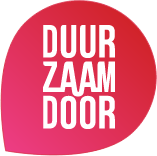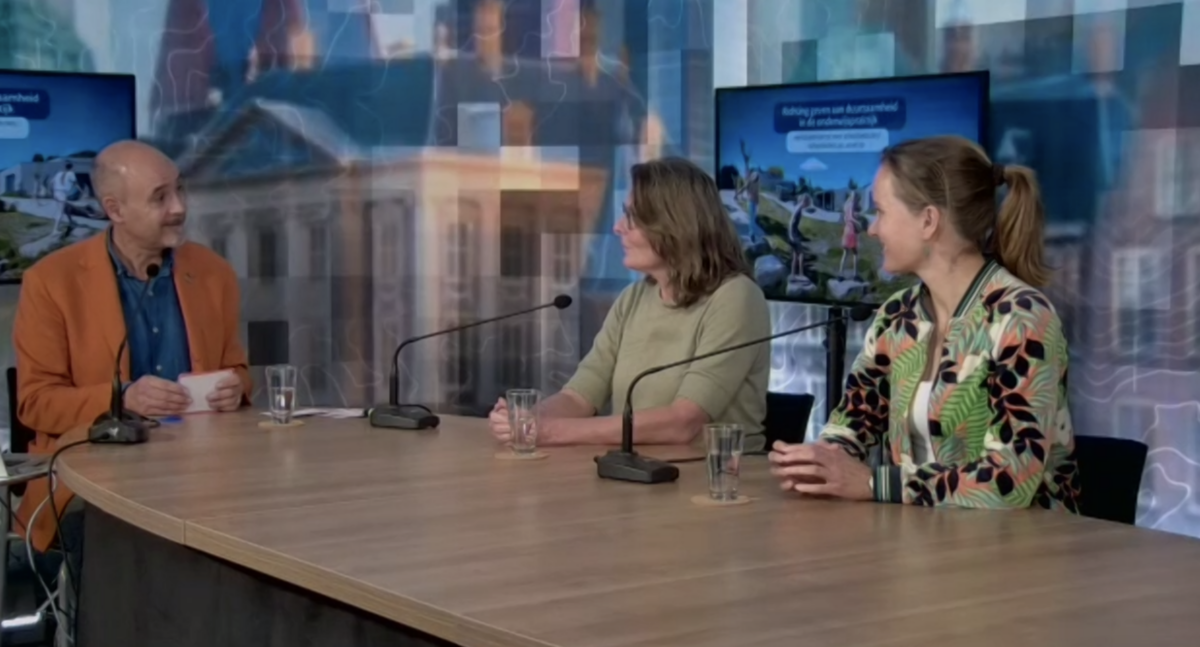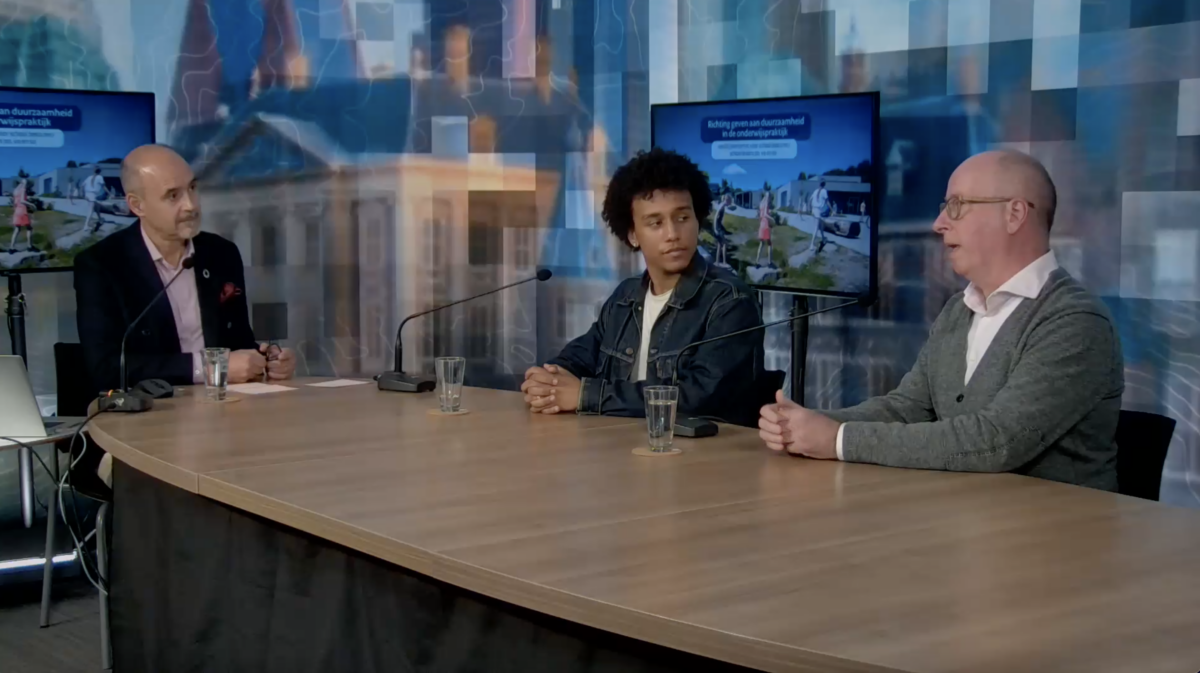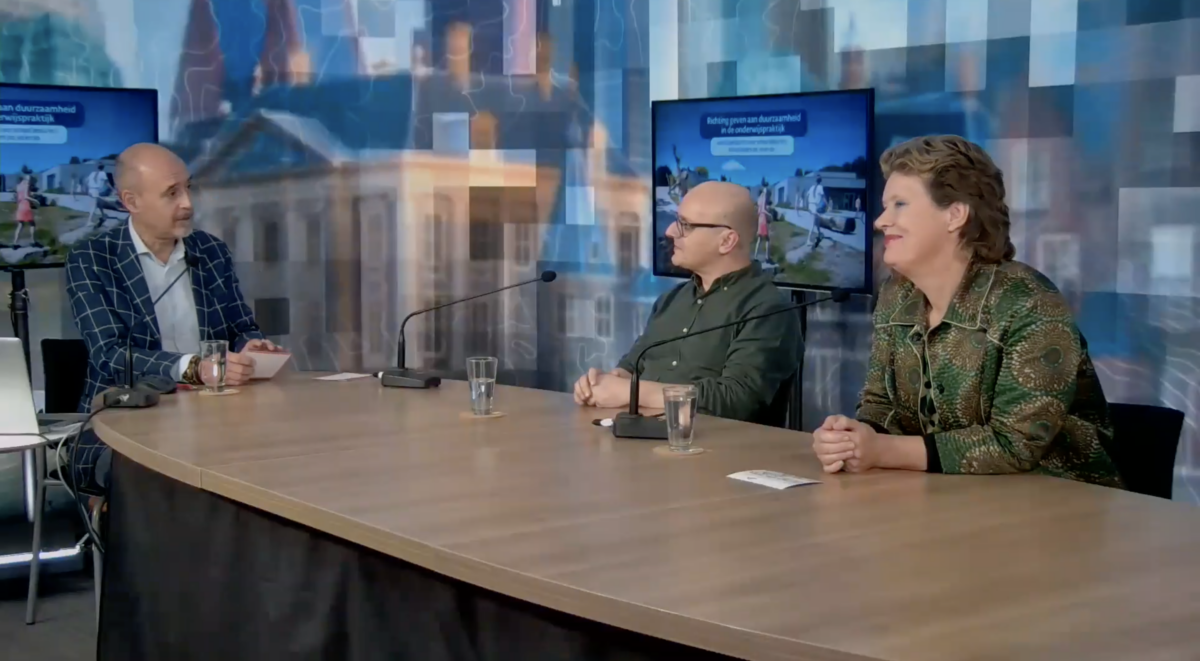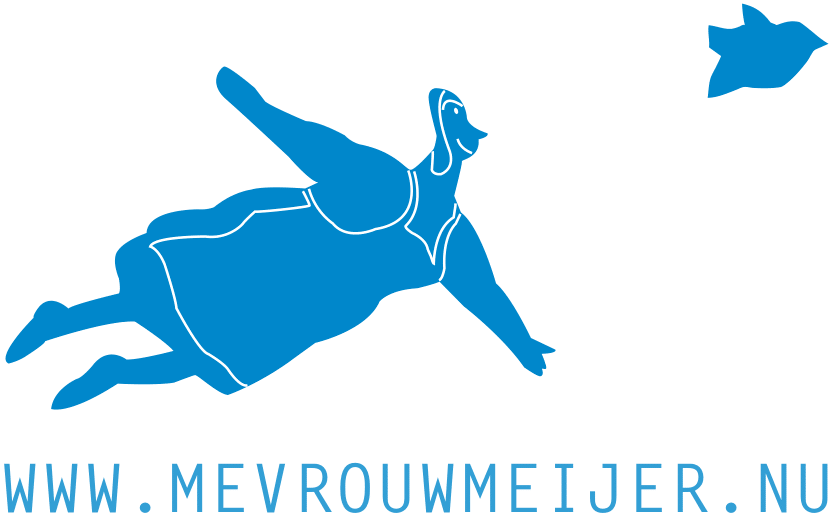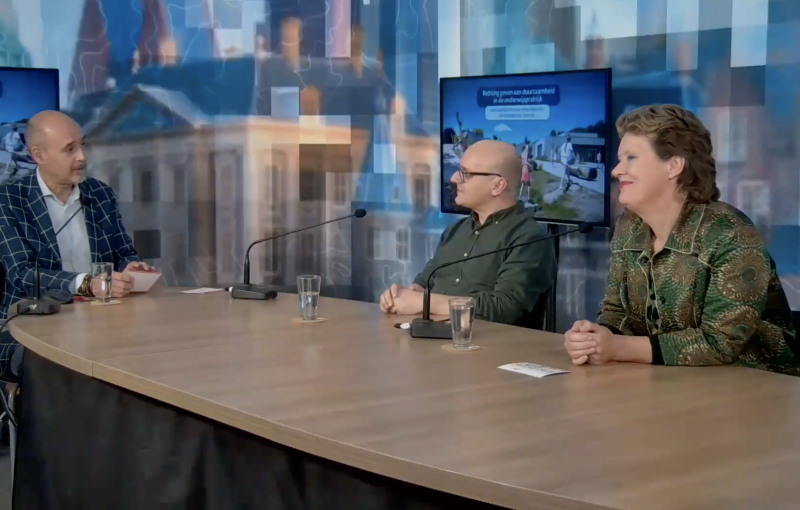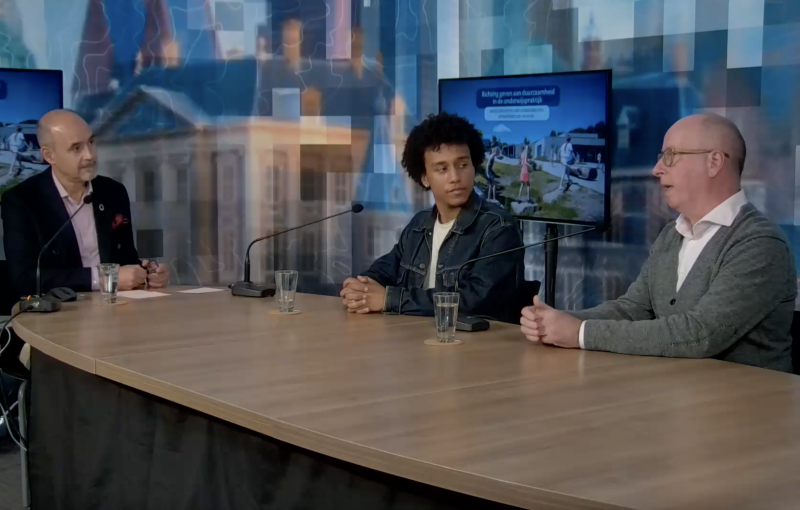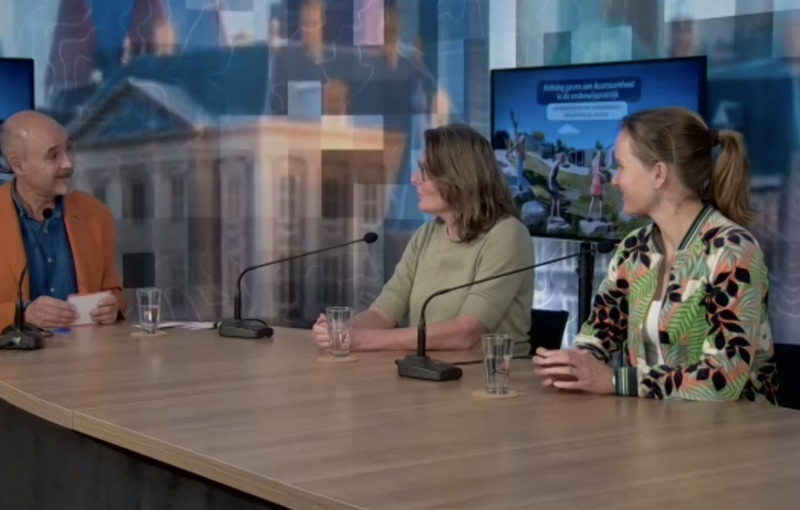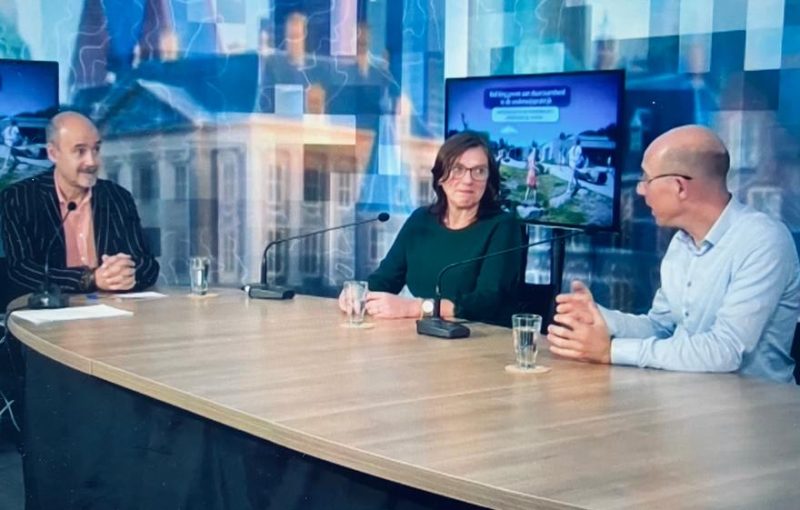View back webinars sustainability in education
- Giving direction to sustainability in educational practice

A series of meetings on key developments on sustainability in education were held in November. The meetings can be watched back on this website and are of interest to a wide audience. In addition to school administrators, school leaders and teachers in primary, secondary and tertiary education, other interested parties are cordially invited to watch the meetings back.
There are an increasing number of school students and teachers who are motivated to work on sustainability themselves in all facets of the Whole School Approach - the lessons, the school building and the environment. They are still searching how and where to start. How can you as school administrators and school leaders (primary, secondary and tertiary education) concretely support and facilitate this process from the breadth of the Sustainable Development Goals? During a series of meetings we identified together the steps that education can take to contribute to the transition tasks that we face as a society. And we also explored what role the government can play in facilitating school boards and school leadership to do so.
Be inspired by practical examples and discover or recalibrate your own leadership. In several table sessions, work with other school administrators, school leaders and a student of the National Campaign Committee for School Students to concretize "sustainability" into instruments and activities in the educational practice of your own school/schools: How do I weave sustainability into my vision and how does this work out in practice?
Agenda
Inspiration/News
Podcasts
No results found.
Knowledge
More Projects
No results found.
Frequently Asked Questions
Do you have other questions? We'd love to think with you. Please contact Peter (po), Eline (vo), Roos (mbo) or Giuseppe (ho).
-
Vision
-
What is sustainable and forward-looking education?
Learning for Sustainable Development (LvDO) focuses on developing the knowledge, skills, attitudes and values needed to create a sustainable future (UNESCO, 2005). -
How do I initiate the broad conversation about the need for sustainability in and outside the school?
The first step in making education more sustainable is to start a conversation. We find that it often helps to just start having these kinds of broad conversations and really have a conversation. Ask your colleagues what they think about this, strike up a conversation with your team leader, support staff or with your students and talk about what is important to you and to them. The urgency of sustainability becomes clear if you look for it close to home, i.e. about issues that affect you personally. From that initial conversation, you can use tools to take the conversation further, such as the SustainaBul, the Sustainable Education Roadmap or the Green Compass. -
What five success factors should not be missing from a multi-year plan to integrate sustainability into education?
The following five points (in no particular order) will help you truly integrate and embed sustainability, and help you prevent a multi-year plan from remaining a paper exercise: 1. Make sure students and teachers also participate in the planning 2. Don't just focus on content, but also on relationships with stakeholders. Good collaboration is essential in creating change 3. Make use of what is already there: the school's core values, the SDGs as a compass, and tools such as SustainaBul, AISHE, PRISE or the Green Compass 4. Monitor and make visible what is going well: for example, collect best practices and celebrate progress 5. Make your multi-year plan concrete and practical, keep it close to what is relevant to your teaching. -
How do you ensure that sustainable development initiatives are not person-dependent?
Our advice is to have conversations and initiatives about sustainable development with as many people within the school as possible and involve them in implementation. Even more important is to anchor sustainable development in the school's vision. That way, you provide a foothold and ensure that it is carried. Ways to involve e.g. your board are the SustainaBul Whether the Roadmap. -
How are other (large) school boards shaping sustainability in education?
Change comes from two sides: bottom up and top down. So administrators certainly also have a role to play in embedding sustainability in education. There are tools for learning from each other. For example, the SustainaBul the opportunity to keep track of what is happening at a school in terms of policy, and best practices are shared in the network, in order to learn from each other. You can learn from each other how to integrate sustainability into your policy, but also very practically how to make the connection between citizenship and sustainability, for example. -
How can government and partnerships facilitate schools to make education more sustainable, both in terms of curriculum and environment?
In the Chamber letter of October 26, 2023, the Minister of Agriculture, Nature and Food Quality, on behalf of the Cabinet, indicates that - as a follow-up to the LvDO in po-vo research - he will draw up a strategy for sustainability in education for the future, together with the relevant departments and the professional field. The goal of this strategy is to provide demand-driven support to schools in achieving greater sustainability in education. The strategy will be based on the learning points from the study. The interdepartmental Sustainable School Working Group is taking the lead on this. -
To what extent does our view of man determine how we think about sustainability?
Self-image, human-image and world-image determine how we view ourselves, others and the world. Examples of economic human images, for example, are homo economicus and homo florens. A person with a homo florens human image generally has a greater regard for sustainability. Read more about gay florens.
-
-
Curriculum
-
How are sustainability and educational quality related?
Sustainability is not something you do on top of, but something you make an integral part of your education. In doing so, it also affects your education and its quality. By focusing on the living environment of the student and the knowledge, skills and competencies that students will later need, you also work on the quality of your education. -
Do the subjects provide sufficient action perspective for sustainable development?
To truly integrate sustainability into your school and give students perspectives for action, more is needed than integrating it into individual subjects. Of course it is important to address sustainability issues in the subjects, but you can also work across subjects within your curriculum. By doing so, you reflect the relationship between different issues. By bringing issues from the environment into the school and linking this to your school curriculum, you also give students perspectives for action. -
How can you incorporate sustainability into the curriculum?
Sustainability can be incorporated into the curriculum in many different ways. Think of challenges like the one at the Technasium education be deployed, to outdoor classes, to the use of teaching materials that are on Wikiwijs shared, to treating contemporary social issues as essay topics or a language. It is precisely by treating sustainability not as a topic, but as a foundation and capstone for integral education, that you give space to the versatility of sustainable development. -
In what ways can sustainability be implemented within the school curriculum and the school itself?
The Whole School Approach can serve as a compass in this regard. The Roadmap (po-vo) and the SustainaBul (vo) are useful tools in this regard. Like this publication from the Knowledge Circle of School Leaders. -
How can teachers incorporate goals into the curriculum in a continuous learning line in various subjects?
As a teacher, you can incorporate goals into a continuous learning line by developing your own vision of sustainable education as a school that allows for cross-curricular work.... In addition, it also helps to appoint a permanent person to spearhead certain tasks, who can bring people together and help teachers work cross-curricularly. This is a sustainability coordinator. Schools that work with this indicate that this gives a huge boost in embedding sustainable development.
-
-
Pedagogy and didactics
-
Is there any known research on the effect of outdoor education on students' nature literacy?
Much recent research has been done on the effects of outdoor education, looking at educational benefits and well-being effects, among other things. The lectorate Child and Nature of Hogeschool Leiden and Thomas More Hogeschool did research on the "teacher" of green schoolyards and is currently investigating the importance of nature in language development and in child care, among other things. Agnes van den Berg, together with IVN, conducted research into nature intelligence of pupils from group 7/8 in 2023, looking at, among other things, nature connectedness; a concept that comes close to nature lovingness. -
To what extent do we take into account the cold cognition of children under the age of 12, Whence pedagogy and didactics about sustainability have a different form and content than the perception determined by hot cognition of adults?
Many NDE initiatives in elementary schools use nature and the immediate surroundings of the school. Children learn by doing to relate to nature and "the world. In this way, they develop in an experiential way what Biesta calls a sense of reality: that on the one hand, as an individual, you have an awareness of what is real, what is real. On the other hand, also that you feel like setting yourself apart with what is real. -
How can I provide poignant teaching on sustainability?
Gripping education can be provided by staying close to the student's experience. Biesta talks about this during the webinar Pedaogics and Didactics, as does Dieuwke Hovinga in relation to her lectorate Child and Nature. You can also think of experiential learning, see for example the work of the lectorate social entrepreneurship at the Marnix Academy. It is important to set a good example as a teacher and school, without wanting to be perfect (we are all learners). -
How can you get students to participate in current sustainability issues?
Pupil involvement and participation is very important. In addition, it is known that students are concerned about the climate and the world. By actively involving them, you offer a perspective for action. You can do that in various ways, for example by linking an assignment to a piece of theory about a sustainability issue, by challenges, or for example by offering students themselves space to get to work at school in for example a Eco-team or through a (sustainability) student council. -
What is the difference between action perspective and a social entrepreneurial attitude?
Both action perspective and a social entrepreneurial attitude touch on something beyond knowledge transfer. By giving students the opportunity in your teaching to learn experientially (experientially and learnably as Dieuwke Hovinga says in webinar Pedagogy and Didactics) you give them insight into how what they learn in school fits into the world and how they can deal with it. -
How can we better educate students about climate change?
This depends in part on age. There are many factual data available, see Babette Porcelijn's books and teaching materials, among others. And children's books, by Marc ter Horst, for example. On the social-emotional level, didactics of hope offers many tools. Wieneke Maris talks about this in the webinar and emphasizes, among other things, the importance of future thinking.
-
-
SDGs
-
As a teacher, how can I design citizenship education?
You can use the core objectives for citizenship as a guide for fleshing out your citizenship curriculum. A team of teachers and experts have updated the core objectives for citizenship (they will be published in 2024). Besides this legal curriculum, as a school you also have the space to further color your citizenship education. Here lies a lot of room for what you as a school find important. Also, if you want to further integrate sustainability, citizenship education offers tools for that. You can use the Citizenship expertise point find more information on how to align your school's values and vision with citizenship education. -
To what extent is there international cooperation within SDG/civic education?
There are several programs working internationally on citizenship education and the SDGs. For example, there is Globe Netherlands, in which students investigate current social issues in different countries. Also Nuffic is internationally involved in sustainability issues . By the way, the Whole School Approach is an international approach, which is also the subject of international research (see for example this research project by Arjen Wals) -
What is the link between (world) citizenship and the SDG's?
Global citizenship is a concept that the Sustainable Development Goals (SDGs, see also the website of SDG Netherlands) and citizenship with each other. This connection is being implemented in more and more schools & internationally. The SDGs were created as an agenda to the world and signed by 193 countries (UN nations). As such, the SDGs are not a political message. They can offer a compass in education and show how the various goals are interconnected. Citizenship education can thereby be nourishment for sustainable development in schools. -
How do you ensure that citizenship education remains politically neutral?
Like the SDGs, citizenship is politically neutral. The citizenship goals contained in the core objectives provide guidance for the design of your school curriculum. At the same time, like sustainable education, citizenship education offers the opportunity to use the school's values and vision as a foundation/ You can use the school's philosophical individuality to shape this education. -
How can you make sure that students who take hands-on education and are a bit younger are also involved?
Learner participation becomes valuable when you keep it close to home. For one student, energy is an important topic, for another, equal opportunity. By having conversations with students (in and out of class) about these topics, you give them room to act as well. You can incorporate this into your lesson by bringing issues from the environment into the school, or by offering students space in an appropriate way in, for example, a student council or Eco-team. -
How can I properly use the SDG's at school?
The SDGs provide a compass for what sustainability is about. You can use the SDGs in your teaching by identifying (together with students) which SDGs touch on particular lessons, by identifying some SDGs as focal points (e.g. climate adaptation and poverty alleviation), and you can make the SDGs visible by flying the SDG flag, for example. Making sustainability visible also gives space to pay attention to it and start the conversation about it. The tip is to also translate the SDGs to the living world of the students.
-
-
Educational housing and operations
-
How can I contribute to separate waste collection at school?
In many schools there is a desire to collect waste separately and have it collected. Each municipality may have agreements about this, so talk to your municipality. You can also contact other schools in your neighborhood to find out whether you have the same wishes and whether there are possibilities for cooperation. Good to know that as of December 1, 2023 a counter Opened for plastic packaging waste separate collection. -
What are good steps if I want to renovate my school building?
It is important to include expertise from the market at an early stage in the planning process and to think carefully about what your goals are. For example, Ruimte OK advises to come up with a more integral approach to the project (integration of advice-design-execution and sometimes even management) because that way the chances of speed and a cost-efficient project are greatest. There are plenty of examples to learn from in order to determine which approach is best suited to the task at hand, see e.g. Information sheetprocurement-sustainableschoolbuilding.pdf and Timeline_for_schoolbuilding_version_September 2022_.pdf. You can also find inspiration for renovation at https://www.mevrouwmeijer.nu/ -
How do you deal with circular building when renovating? Should you consider being circular in 2050 if renovation is planned for a building now?
Circular thinking is certainly not only applicable to new construction but can also be part of a renovation task. Indeed, clever reuse of existing building components contributes to circular thinking and prevents waste of raw materials. The period until 2050 is still far away. The trick is to see how planned investments for maintenance can be optimized with the lowest possible environmental burden and/or the highest possible reduction of CO2 emissions or the promotion of biodiversity. Use the SDG goals to see what is possible within the housing task of a school. If the previously mentioned knowledge document about this -
As a school, how can you budget-neutral maximize sustainability?
How you as a school can optimally use your budget for sustainability is of course different for each school. On the website of Ruimte OK you will find plenty of information about this.
-
-
Overarching
-
How can I exchange great ideas related to sustainable education with colleagues's?
Learning for Tomorrow has several educational networks where teachers (and administrators) meet and inspire each other. Join one of the po, vo or vmbo-pro networks. -
What incentives are needed and desired to integrate sustainability into education?
The transition to an education system in which sustainability is integrated requires something of everyone. People working in education will have to impart different skills and knowledge and facilitate students to learn in a meaningful way for their future. At the same time, top-down guidance is also needed. From research it turns out that many teachers want to pay more attention to sustainability, but are not sure how. Therefore, we are very pleased that a Chamber letter it was announced that a strategy for sustainability in education will be drawn up from relevant ministries. -
How can I track and be accountable for the steps I am taking toward sustainable education?
Visible progress motivates tremendously! That's why it's fun to keep track of the progress you make. You can use the SustainaBul use as a periodic measuring stick for what you are doing, or set your own goals in a multi-year plan and record your progress on that annually. Eco-Schools also provides the ability to track progress. -
What do school leaders need to give sustainability and circularity a structural place in their organization in relation to the school's natural and social environment?
The School Leadership Knowledge Circle "Sustainable Development in Primary Education" collaborated on unlocking knowledge on the topic of Sustainable Development (in primary education). Their findings and future and developmental perspectives have been compiled in a book. The Whole Approach, which includes the school's environment, was used as the basis. -
How does sustainability in a broad sense resonate among schools?
The research LvDO in po and vo (December 2022) gives a good picture of the state of affairs.
-
